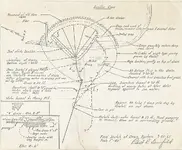Raparee
Hero Member
- Joined
- Feb 18, 2016
- Messages
- 657
- Reaction score
- 670
- Golden Thread
- 0
- Location
- Nova Scotia
- Primary Interest:
- All Treasure Hunting
To pivot to another 'mystery' on the island...
Who thinks the 90 foot stone story is a bit fishy? Or not...
My thought is if you were placing a stone to entice someone that got to that level to go ahead and dig to set off the water trap, as the story goes...Why in the world would you use an encrypted message that no one can figure out?
It would be a touch more believable if it was in French, Spanish, Portuguese, etc. the native language of whoever supposedly placed it there...but encrypted with symbols no normal digger could figure out? Not buying it...
Some interesting info on the 90' stone can be found here ---> A.T. Kempton's Fake Inscription




